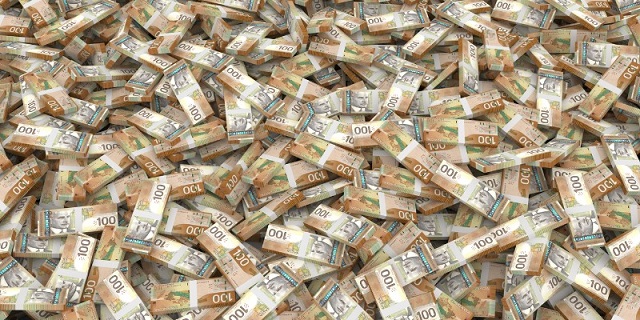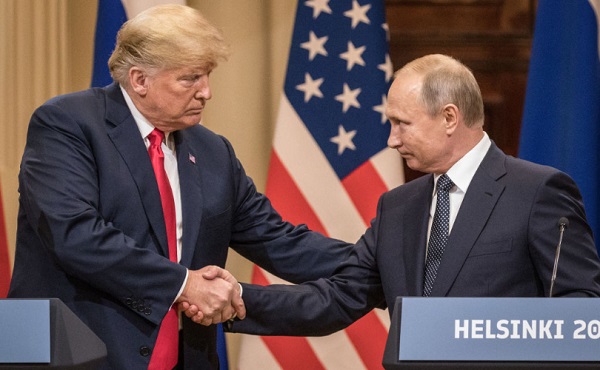Economy
Reliance on fossil fuels remains virtually unchanged despite trillions for ‘clean energy’

From the Fraser Institute
By Elmira Aliakbari, Julio Mejía, and Jason Clemens
” after tens of trillions of dollars spent on the transition away from fossil fuels, consumption declined by 3.8 percentage points as a share of total global energy. “
At COP28, the recent United Nations climate change conference in the United Arab Emirates, bureaucrats, politicians and activists from nearly 200 countries gathered to push for a “transition away from fossil fuels” and continue and indeed expedite efforts to achieve a global net-zero “carbon footprint” by 2050. However, despite significant spending on clean energy, the world’s dependence on fossil fuels remains largely unaffected, calling into question how realistic the commitment to zero emissions by 2050 is in the real world.
The UN staged the first “COP” conference in Berlin in 1995, marking the beginning of a collaborative international effort of energy transition and decarbonization. According to one report, global investment in renewable energy totalled US$7 billion in 1995.
Today, according to the latest data from the International Energy Agency (IEA), investment in “clean energy” by both governments and private industry reached more than US$1.7 trillion in 2023. That’s roughly the equivalent of the entire Australian economy this year. This spending includes more than just renewable power (wind, solar, etc.), which totalled $659 billion in 2023, but also electric vehicles, battery storage, nuclear, carbon capture and more.
More broadly, according to the IEA numbers, from 2015 to 2023, governments and industry worldwide have spent $11.7 trillion (inflation-adjusted) on clean energy. For context, this is basically the equivalent of all the goods and services produced in Germany, Japan and the United Kingdom combined in 2023. Simply put, an extraordinary amount of money and resources have been allocated to the transition away from fossil fuels for the better part of three decades.
So, what’s the return on this investment?
According to data from the Statistical Review of World Energy, from 1995 to 2022, the amount of fossil fuels (oil, gas and coal) consumed worldwide actually increased by 58.6 per cent. Specifically, oil consumption increased by 34.2 per cent, natural gas by 86.7 per cent and coal by 72.7 per cent.
There was, however, a small decline in the share of total energy provided by oil, gas and coal during that time period, falling from 85.6 per cent of total energy use in 1995 to 81.8 per cent in 2022. In other words, after tens of trillions of dollars spent on the transition away from fossil fuels, consumption declined by 3.8 percentage points as a share of total global energy.
Meanwhile, renewables increased from 0.6 per cent of total energy to 7.5 per cent over the same period but both nuclear and hydro declined (6.5 per cent to 4.0 per cent and 7.3 per cent to 6.7 per cent, respectively). In other words, the 3.8-percentage point decline in fossil fuels as a share of total energy in 2022 was offset by a net increase in clean energy of the same amount.
In addition to the massive amounts of spending, much of it paid for by taxpayers, this transition has come with other costs. Renewable sources such as wind and solar are not always available and therefore require back-up energy systems. Lack of investment in back-up systems and required infrastructure has resulted in marked price increases in energy and/or blackouts in parts of Europe and the United States.
At COP28, conference attendees including Canada’s Environment Minister Steven Guilbeault pledged to reach net-zero emissions—that our economy will emit no greenhouse gas emissions or offset its emissions—in 26 years. But given the trillions spent, the limited progress in reducing global reliance on fossil fuels, and the price increases and reduced energy reliability in countries that have meaningfully transitioned, that goal seems unrealistic in the real world.
Authors:
Business
Most Canadians say retaliatory tariffs on American goods contribute to raising the price of essential goods at home

- 77 per cent say Canada’s tariffs on U.S. products increase the price of consumer goods
- 72 per cent say that their current tax bill hurts their standard of living
A new MEI-Ipsos poll published this morning reveals a clear disconnect between Ottawa’s high-tax, high-spending approach and Canadians’ level of satisfaction.
“Canadians are not on board with Ottawa’s fiscal path,” says Samantha Dagres, communications manager at the MEI. “From housing to trade policy, Canadians feel they’re being squeezed by a government that is increasingly an impediment to their standard of living.”
More than half of Canadians (54 per cent) say Ottawa is spending too much, while only six per cent think it is spending too little.
A majority (54 per cent) also do not believe federal dollars are being effectively allocated to address Canada’s most important issues, and a similar proportion (55 per cent) are dissatisfied with the transparency and accountability in the government’s spending practices.
As for their own tax bills, Canadians are equally skeptical. Two-thirds (67 per cent) say they pay too much income tax, and about half say they do not receive good value in return.
Provincial governments fared even worse. A majority of Canadians say they receive poor value for the taxes they pay provincially. In Quebec, nearly two-thirds (64 per cent) of respondents say they are not getting their money’s worth from the provincial government.
Not coincidentally, Quebecers face the highest marginal tax rates in North America.
On the question of Canada’s response to the U.S. trade dispute, nearly eight in 10 Canadians (77 per cent) agree that Ottawa’s retaliatory tariffs on American products are driving up the cost of everyday goods.
“Canadians understand that tariffs are just another form of taxation, and that they are the ones footing the bill for any political posturing,” adds Ms. Dagres. “Ottawa should favour unilateral tariff reduction and increased trade with other nations, as opposed to retaliatory tariffs that heap more costs onto Canadian consumers and businesses.”
On the issue of housing, 74 per cent of respondents believe that taxes on new construction contribute directly to unaffordability.
All of this dissatisfaction culminates in 72 per cent of Canadians saying their overall tax burden is reducing their standard of living.
“Taxpayers are not just ATMs for government – and if they are going to pay such exorbitant taxes, you’d think the least they could expect is good service in return,” says Ms. Dagres. “Canadians are increasingly distrustful of a government that believes every problem can be solved with higher taxes.”
A sample of 1,020 Canadians 18 years of age and older was polled between June 17 and 23, 2025. The results are accurate to within ± 3.8 percentage points, 19 times out of 20.
The results of the MEI-Ipsos poll are available here.
* * *
The MEI is an independent public policy think tank with offices in Montreal, Ottawa, and Calgary. Through its publications, media appearances, and advisory services to policymakers, the MEI stimulates public policy debate and reforms based on sound economics and entrepreneurship.
Business
Trump confirms 35% tariff on Canada, warns more could come

Quick Hit:
President Trump on Thursday confirmed a sweeping new 35% tariff on Canadian imports starting August 1, citing Canada’s failure to curb fentanyl trafficking and retaliatory trade actions.
Key Details:
- In a letter to Canadian Prime Minister Mark Carney, Trump said the new 35% levy is in response to Canada’s “financial retaliation” and its inability to stop fentanyl from reaching the U.S.
- Trump emphasized that Canadian businesses that relocate manufacturing to the U.S. will be exempt and promised expedited approvals for such moves.
- The administration has already notified 23 countries of impending tariffs following the expiration of a 90-day negotiation window under Trump’s “Liberation Day” trade policy.
Diving Deeper:
President Trump escalated his tariff strategy on Thursday, formally announcing a 35% duty on all Canadian imports effective August 1. The move follows what Trump described as a breakdown in trade cooperation and a failure by Canada to address its role in the U.S. fentanyl crisis.
“It is a Great Honor for me to send you this letter in that it demonstrates the strength and commitment of our Trading Relationship,” Trump wrote to Prime Minister Mark Carney. He added that the tariff response comes after Canada “financially retaliated” against the U.S. rather than working to resolve the flow of fentanyl across the northern border.
Trump’s letter made clear the tariff will apply broadly, separate from any existing sector-specific levies, and included a warning that “goods transshipped to evade this higher Tariff will be subject to that higher Tariff.” The president also hinted that further retaliation from Canada could push rates even higher.
However, Trump left the door open for possible revisions. “If Canada works with me to stop the flow of Fentanyl, we will, perhaps, consider an adjustment to this letter,” he said, adding that tariffs “may be modified, upward or downward, depending on our relationship.”
Canadian companies that move operations to the U.S. would be exempt, Trump said, noting his administration “will do everything possible to get approvals quickly, professionally, and routinely — In other words, in a matter of weeks.”
The U.S. traded over $762 billion in goods with Canada in 2024, with a trade deficit of $63.3 billion, a figure Trump called a “major threat” to both the economy and national security.
Speaking with NBC News on Thursday, Trump suggested even broader tariff hikes are coming, floating the idea of a 15% or 20% blanket rate on all imports. “We’re just going to say all of the remaining countries are going to pay,” he told Meet the Press moderator Kristen Welker, adding that “the tariffs have been very well-received” and noting that the stock market had hit new highs that day.
The Canadian announcement is part of a broader global tariff rollout. In recent days, Trump has notified at least 23 countries of new levies and revealed a separate 50% tariff on copper imports.
“Not everybody has to get a letter,” Trump said when asked if other leaders would be formally notified. “You know that. We’re just setting our tariffs.”
-

 Environment2 days ago
Environment2 days agoEPA releases report on chemtrails, climate manipulation
-

 Crime2 days ago
Crime2 days agoSweeping Boston Indictment Points to Vast Chinese Narco-Smuggling and Illegal Alien Labor Plot via Mexican Border
-

 Business2 days ago
Business2 days agoCBC six-figure salaries soar
-

 International1 day ago
International1 day agoSupport for the Ukraine war continues because no one elected is actually in charge.
-

 Business1 day ago
Business1 day agoTrump slaps Brazil with tariffs over social media censorship
-

 National1 day ago
National1 day agoHow Long Will Mark Carney’s Post-Election Honeymoon Last? – Michelle Rempel Garner
-

 Business2 days ago
Business2 days agoUN’s ‘Plastics Treaty’ Sports A Junk Science Wrapper
-

 espionage1 day ago
espionage1 day agoFBI’s Dan Bongino may resign after dispute about Epstein files with Pam Bondi










